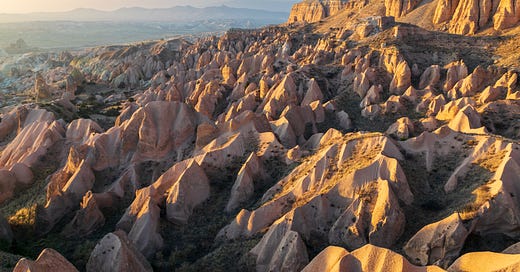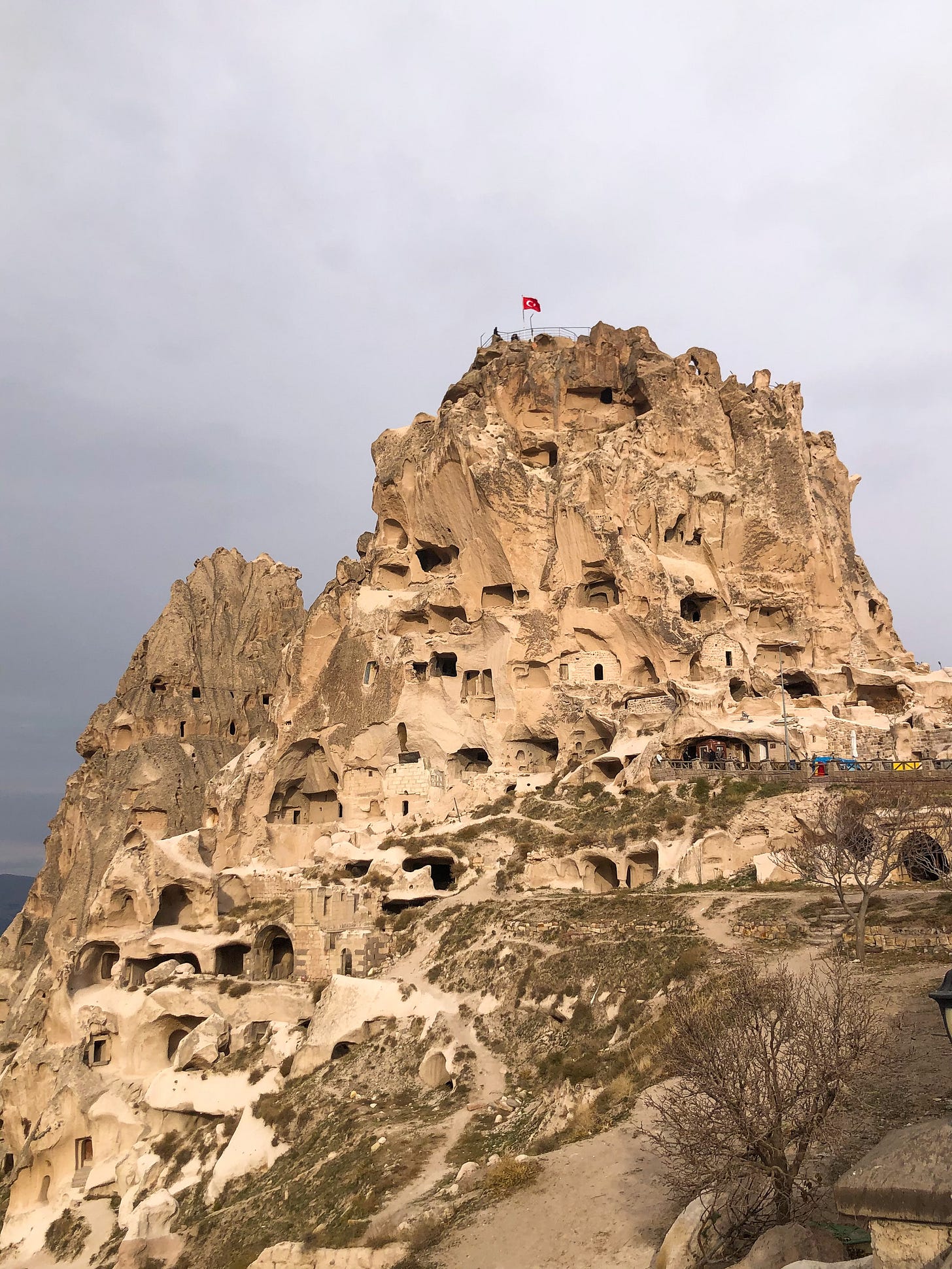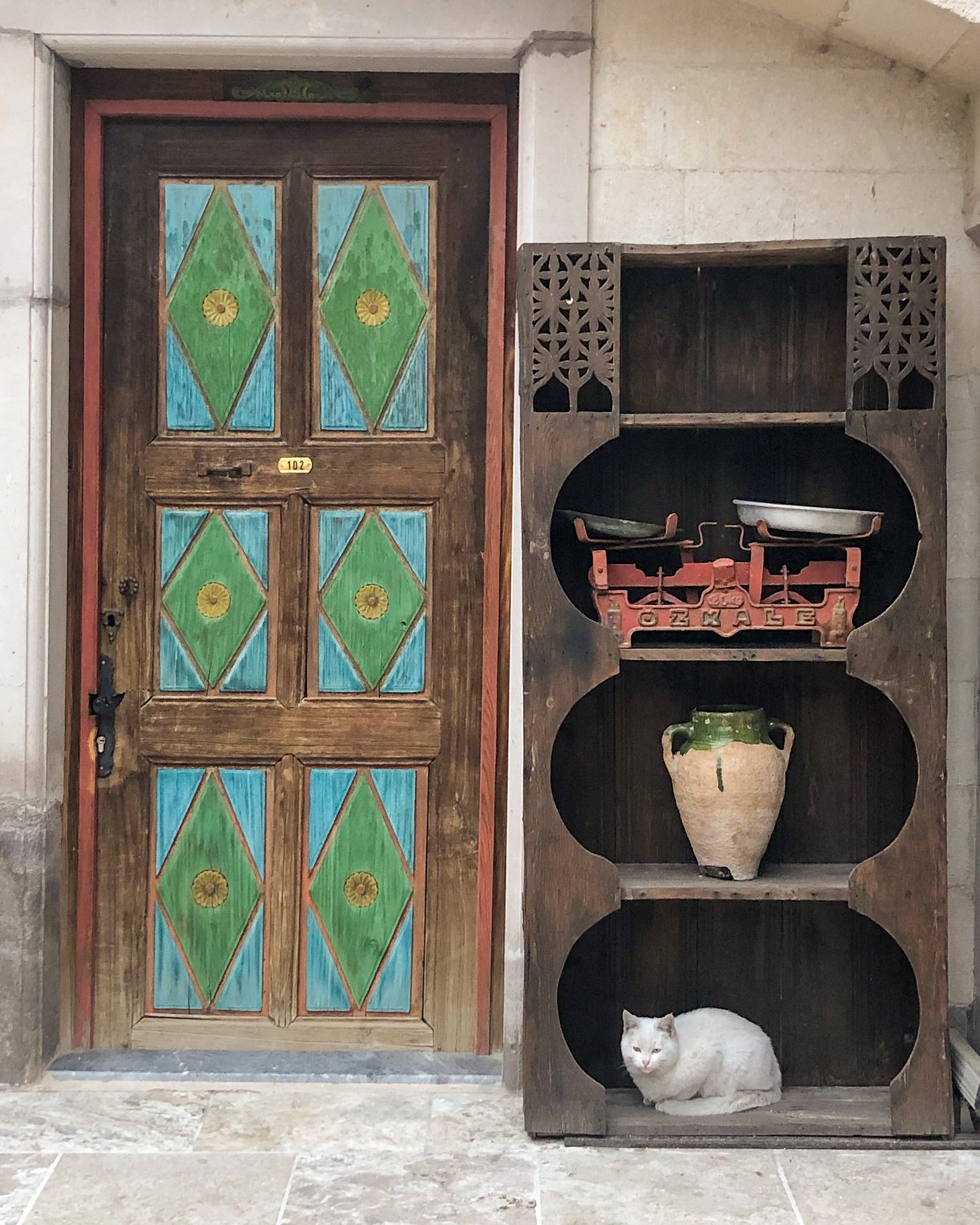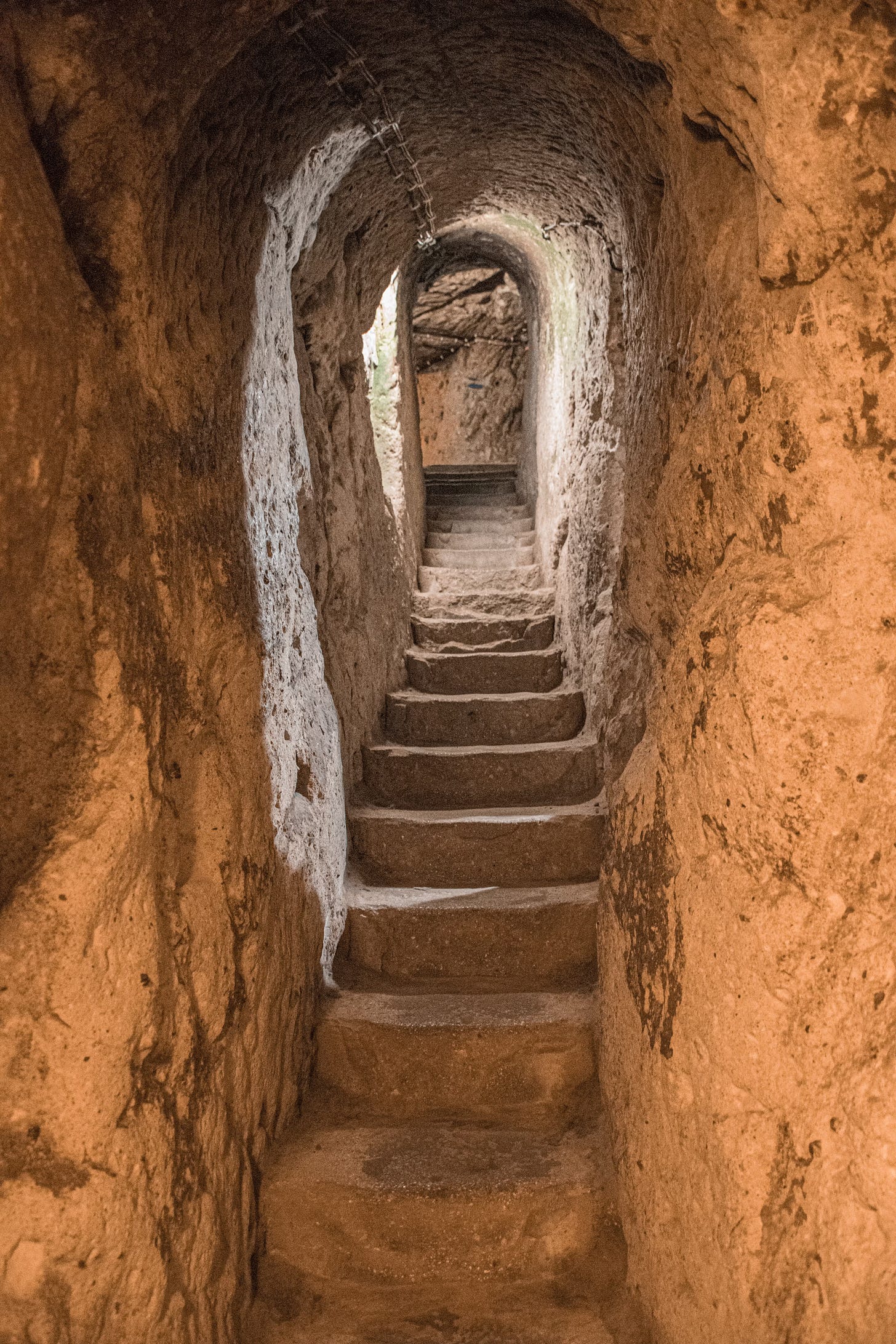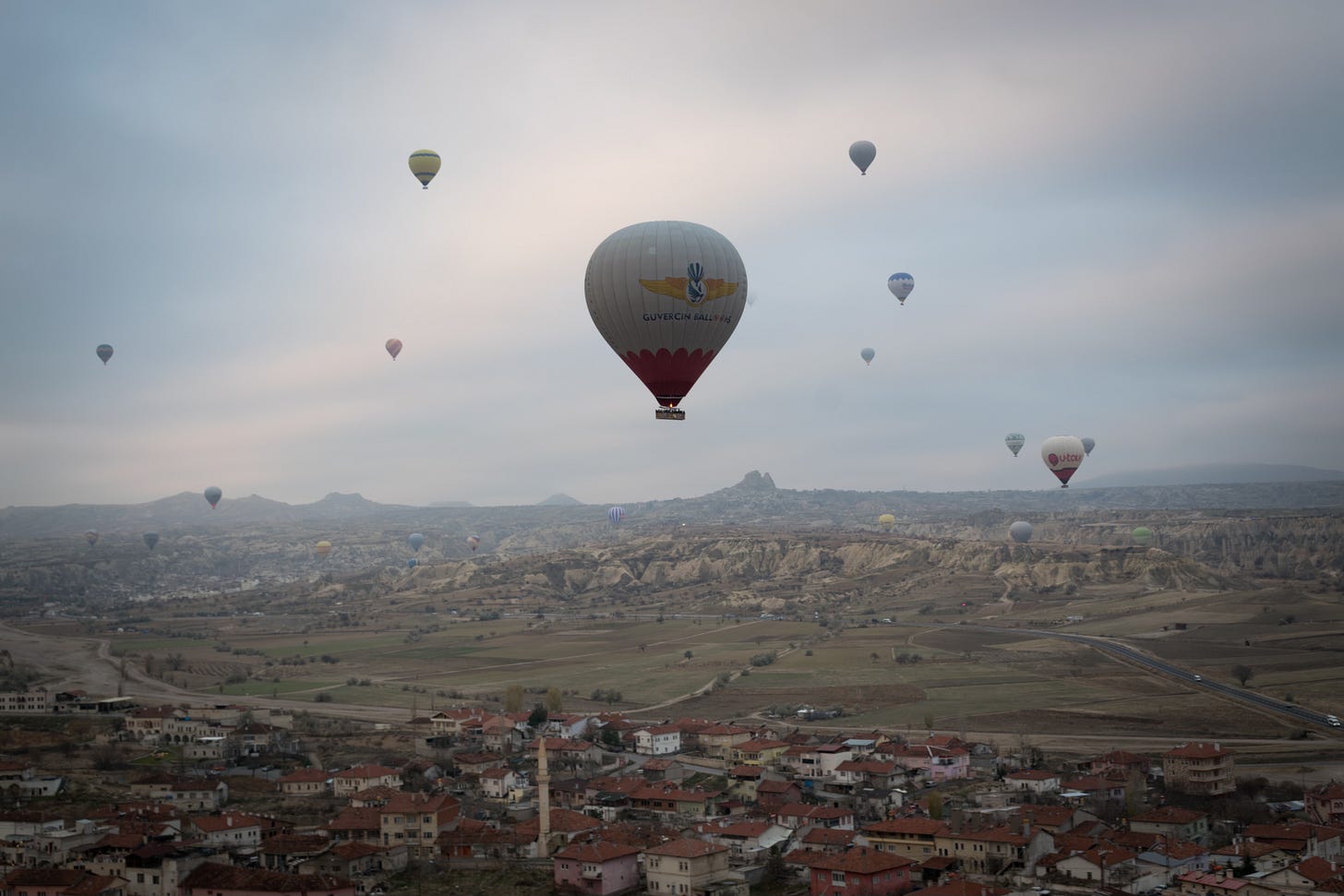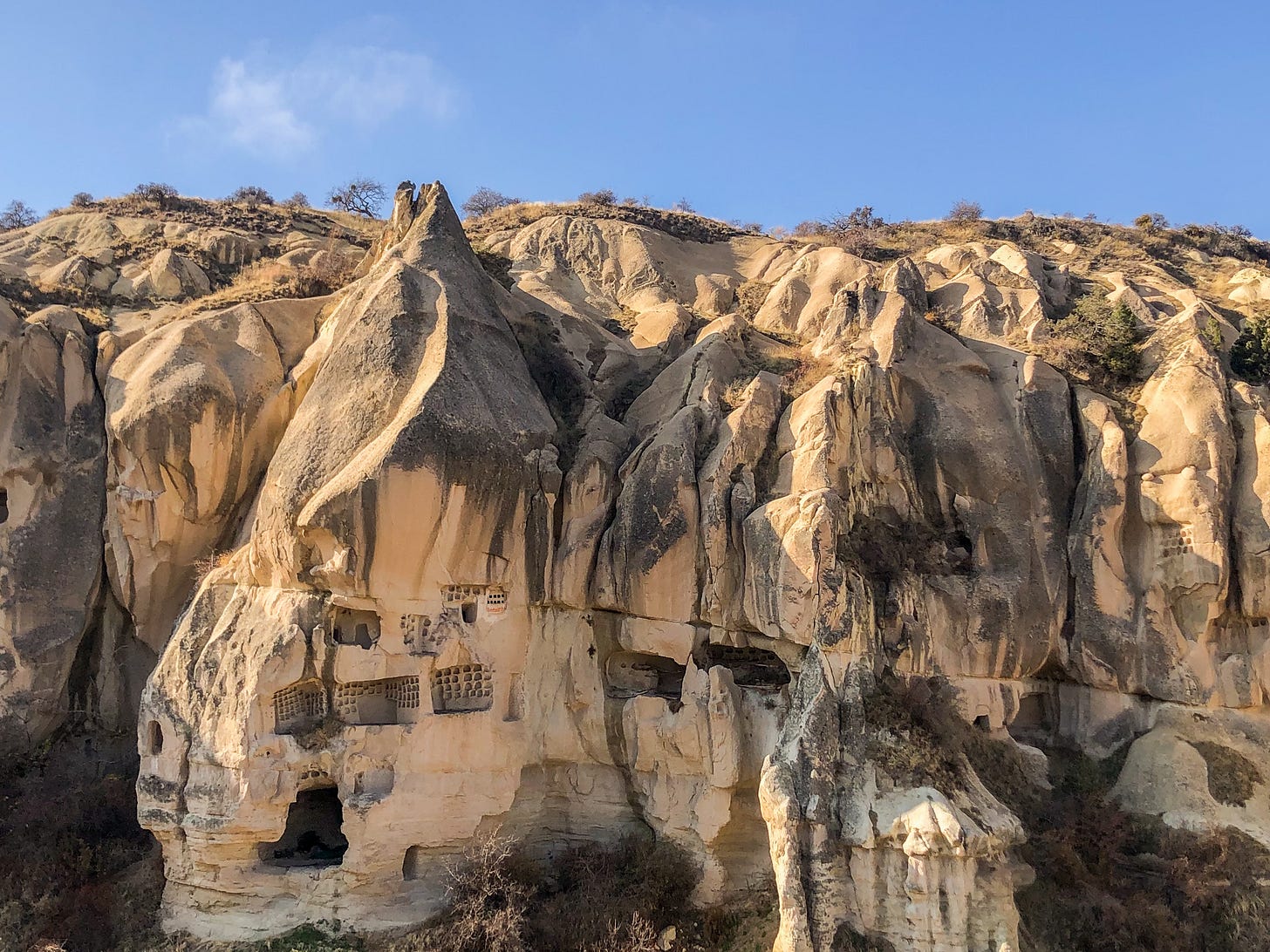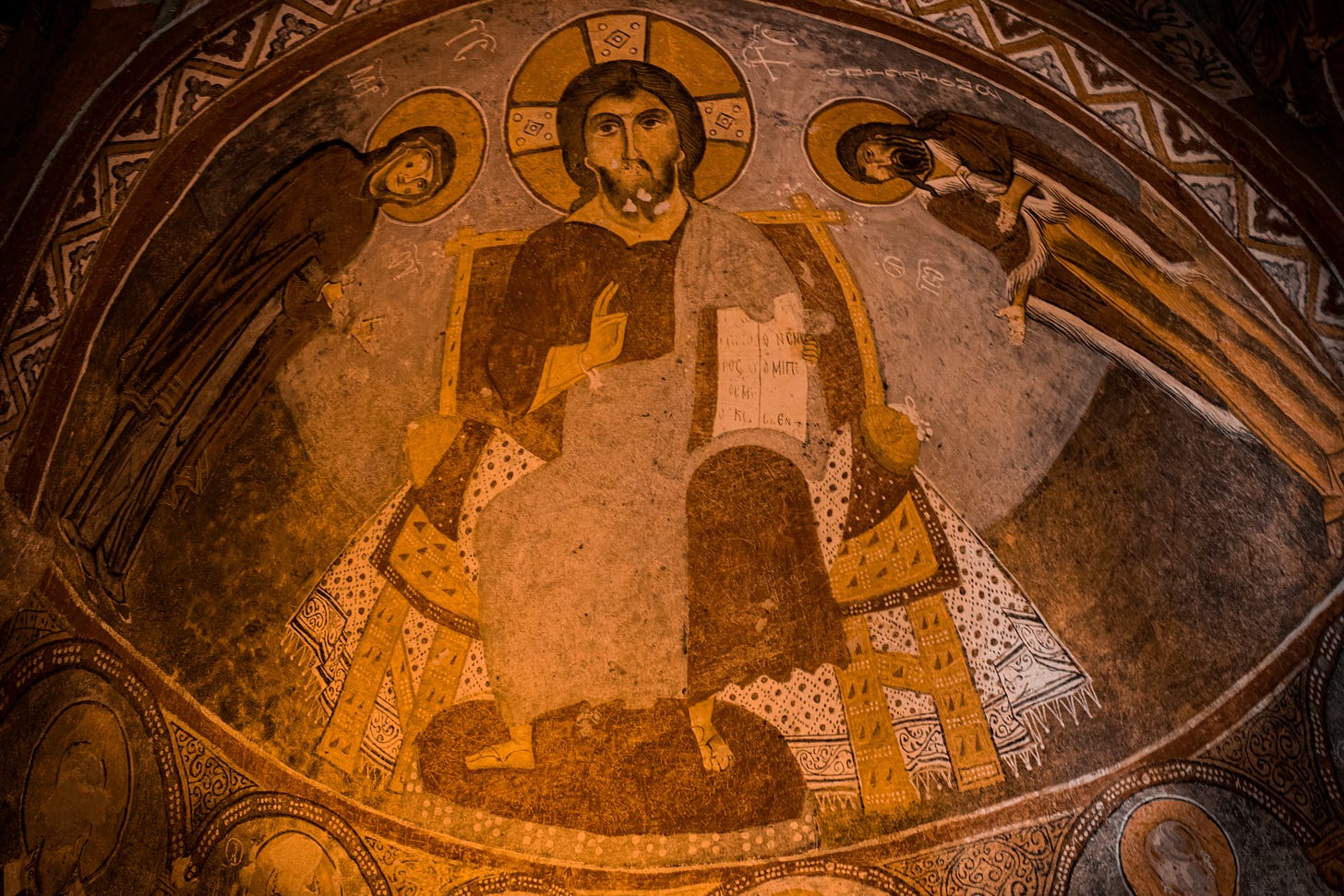The muted grays and browns of the desert landscape passed by as I engaged in a broken conversation with my taxi driver, using Google Translate as a middleman. I had arrived in the mysterious land of Cappadocia, a region in central Turkey with a history as ancient as time itself. My destination was Göreme, a town that stood at the heart of this magical land.
Cappadocia’s history spans millennia. The region's unique geological features, including the fairy chimneys and rock formations, have long been inhabited by various civilizations. Ancient Anatolian societies are intertwined with evidence of Hittite settlements dating back to the second millennium BCE. In later centuries, the region became a melting pot of civilizations, witnessing the rise and fall of the Phrygians, Persians, and Romans. During the early days of Christianity, Cappadocia gained prominence as a center of monasticism. The distinctive cave dwellings and rock-cut churches, serve as remnants of this religious heritage. Over time, Cappadocia experienced invasions by the Seljuks and later the Ottomans, contributing to the cultural tapestry of the region.
I eventually reached Göreme, where I picked up my rental car and drove to some of the panoramic viewpoints in the area to get a feel for the uniqueness of Cappadocia’s landscapes. The striking rock formations, the otherworldly fairy chimneys, and the vastness of the valleys around me were nothing short of spectacular. The soft volcanic rock of this area was easy to work and led to cave-dwelling habitations by the thousands. At the Göreme Panoramic Spot, I got my first glimpses of the straggly rocks of Cappadocia, and in Pigeon Valley, I saw the tiny homes carved for pigeons in ancient times when their manure would be used for fertilizer.
I eventually made my way to the tallest structure on the horizon, Uçhisar Castle. This ‘castle’ is not like the grand fortresses of Europe; it's actually a rock formation carved into numerous crisscrossing rooms and passageways, resembling a honeycomb. The passage of time has left it bare of anything of value, with no stately furniture or Crown Jewels, only carved-out rooms that were once witnesses to life in this remote corner of central Turkey. Slowing climbing up while exploring the nooks and crannies of the castles, I came to the summit where a Turkish flag was fluttering in the wind. Around me were sweeping views of the town and beyond.
All of this exploring had made me tired and hungry, so it was time to check into my hotel. My room was in a boutique hotel in the center of Göreme, which had a rustic charm and Ottoman-inspired decoration. The room was actually carved into the rock, making me feel as though I was seamlessly blending into the Cappadocia landscape. I had dinner at a nearby, unassuming restaurant called Cancan where Middle Eastern hospitality was on full display as the hospitable hosts gave complimentary soups, dips, and teas on top of the oven-roasted vegetables I ordered with labneh (the creamy and tangy yogurt dip) and my favorite Middle-Eastern snack, sigara borek (savory pastries stuffed with feta cheese). Satisfied and looking forward to the adventures ahead, I strolled back to my hotel and called it a night.
Arriving in the dusty streets of Derinkuyu the next morning, there does not appear to be anything special. It seems to be an ordinary town with a few stalls selling refreshments and souvenirs. However, just beneath my feet is a hidden secret. In 1963, during renovations, a local man knocked down a wall in his house, revealing a hidden passageway. This unassuming discovery led to the revelation of an ancient underground city, once home to 20,000 people.
Through the forbidding entrance, I followed the stone passageways deeper and deeper underground. The ceiling was only inches from my head, and I had to often contort my body so I wouldn’t get scraped on the rocks. These tight spaces ensured invaders had to crouch over and enter in a single file, making the city much easier to defend. There were also massive stone doors that could close off the city from the inside.
A series of lightbulbs illuminated a path through the labyrinth of rooms. There were spaces for livestock, kitchens, living rooms, churches, and even graves. In total, the city is eight floors deep, reaching up to 280 feet in depth - only a small portion of which is open to the public. A series of wells tapped into underground water sources, while a series of ventilation shafts, which I could still see, provided air for the population, showcasing the ingenious construction of this ancient city.
The origin of Derinkuyu is still a great mystery. Recent estimates suggest that it was built in the 8th century B.C. by a group called the Phrygians, but there is no conclusive dating - it could be much older. Over time, it was enlarged and used by people of different eras, most notably by Christians, who historians believe used it to hide from persecution. Miles of tunnels actually connect Derinkuyu with other underground cities, and in total, nearly 200 other cities have been discovered in Turkey. What secrets do these hide? What great fear led people to create these massive underground worlds nearly 3,000 years ago? The builders of these massive underground cities must have had a compelling reason to pull off such an architectural feat. Something tells me we are missing a piece of the story.
The overcast morning sky the next day hung heavy with gray, serving as a backdrop to the field where a fleet of hot-air balloons slowly came to life, inflating with fiery bursts. A quiet buzz of anticipation filled the air as groups of tourists eagerly awaited their turn for takeoff. Soon we were off and the balloon gracefully maneuvered over the enchanting landscape of Cappadocia. We floated over valleys, soared past cliffs, drifted above fairy chimneys, and glided above quaint towns with their small red roofs and minarets, as the unique charm of the region unfolded below. Mid-flight, a sudden surge of wind added an unexpected thrill, prompting the pilot to opt for an early landing. The balloon descended, and with a thump, landed seemingly in the middle of nowhere. Grateful for this bucket-list experience, I would hold onto the memory as a cherished adventure but quietly resolved it would be my last hot-air balloon ride.
Nestled within the surreal landscapes of Cappadocia is the Göreme Open Air Museum, which I would be exploring next. Carved into the soft rock of the region, this historical sanctuary bears witness to the resilience of early Christians who sought refuge in the face of Roman persecution. It is a world of rock-cut churches, monastic dwellings, and chapels, each telling tales of devotion and survival.
Through modest entrances, I ducked into the churches. In some, much of the artwork had faded with the centuries, but others where light did not reach were remarkably well preserved and had withstood the passage of time. I was struck by the intricate details and mesmerizing beauty of the frescoes. The history and beauty of Cappadocia continued to awe me at every stop.
It was my last evening in Cappadocia and for sunset, I came up to an area known as the Red Valley. As the sun dipped below the horizon, the landscape transformed, bathed in a deep, vibrant red hue. Sometimes, after years of travel, certain things can begin to look the same. I've toured countless churches and palaces in Europe, explored temples in Asia, and marveled at ruins in South America, and sometimes, the novelty can wane. However, I have never seen a place that has captured my imagination like Cappadocia. Ancient underground cities connected by a series of secret tunnels, cave houses hidden in the desert and mysterious castles carved into ancient rocks - things that would seem far-fetched if found within the pages of a fantasy novel. Yet, here they stand, wonders in our world, reminding me that this world still harbors secrets and wonders beyond the scope of our understanding.


